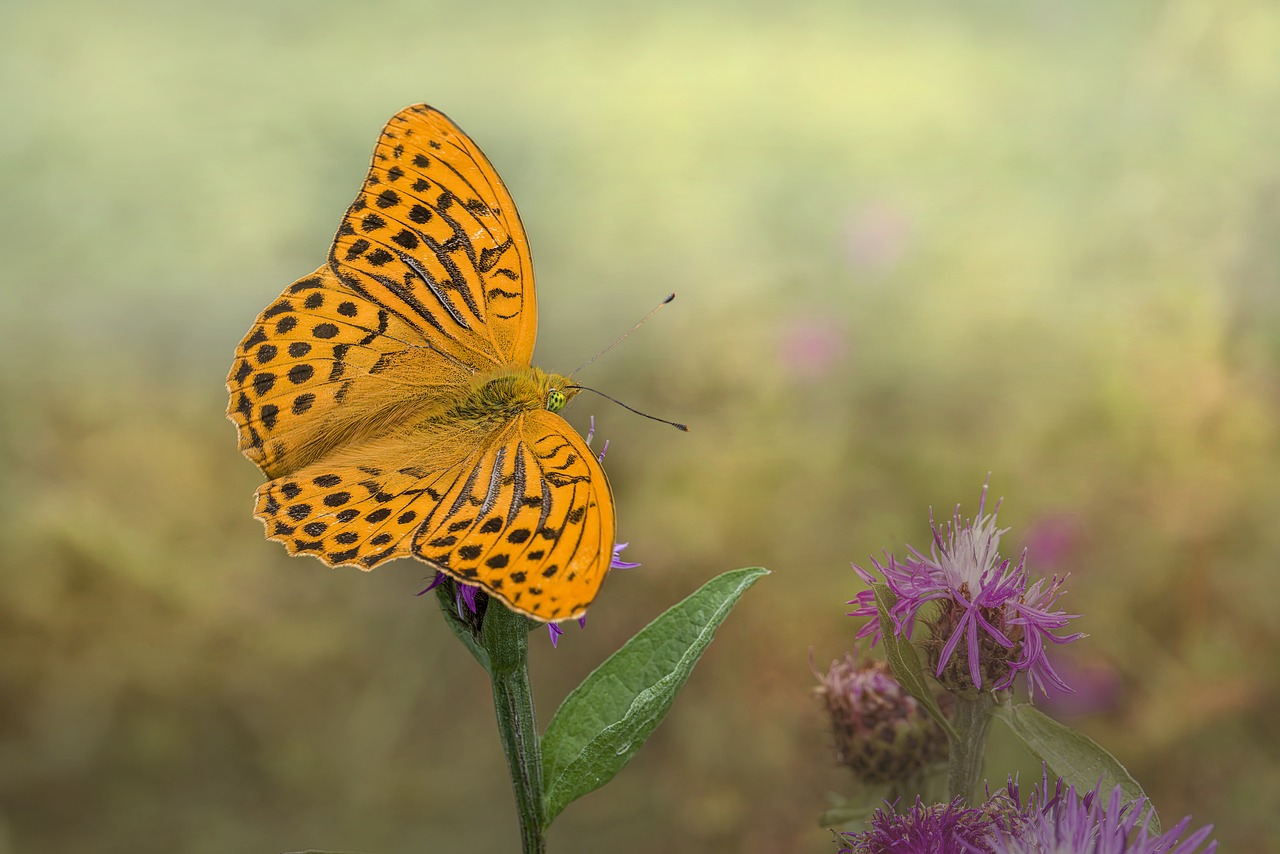🦋 Silver-washed Fritillary (Argynnis paphia)
The Silver-washed Fritillary is a large, strikingly beautiful butterfly found across Europe and parts of Asia. Named for the silvery streaks on the underside of its hindwings, it is a fast, graceful flyer typically seen gliding through sunny woodland clearings.
🔍 Identification
- Wingspan:
54–70 mm — one of the largest fritillaries in its range - Male:
- Bright orange with black spots
- Notable four dark scent lines (androconial streaks) on forewings
- Female:
- Similar in pattern but larger, often with a greener or duller hue
- Underside:
- Hindwings have distinct silvery-white streaks on a greenish background—key to the name “silver-washed”
🌍 Distribution & Habitat
- Range:
- Found widely across Europe, North Africa, and into Central Asia
- Habitat:
- Prefers deciduous and mixed woodland, especially areas with sunlit rides and glades
- Often seen feeding along forest edges and near bramble or thistles
🌱 Life Cycle
- Flight period:
- June to September, peaking mid-summer
- Eggs:
- Laid singly in bark crevices, often near violets, the caterpillar’s food plant
- Larvae:
- Hatch in late summer and enter hibernation immediately
- Resume feeding on violets (Viola spp.) in spring
- Pupation:
- Occurs on stems or low vegetation
- Adults emerge after ~2–3 weeks
🍽️ Diet
- Adults:
- Feed on nectar from bramble, thistles, knapweed, and privet
- Larvae:
- Feed exclusively on wild violets
🧠 Behavior & Traits
- Flight:
- Strong, gliding flight with occasional flutters
- Males actively patrol woodland rides in search of females
- Territoriality:
- Males can be quite territorial, often returning to favored perches
⚠️ Conservation Status
- IUCN Status: Not globally threatened (Least Concern)
- Threats:
- Loss of suitable woodland habitat
- Overgrazing and over-shading of violet-rich areas
- Conservation efforts:
- Woodland management that encourages open glades, ride-side violets, and sunlight penetration is beneficial
🧬 Fun Fact
Unlike many butterflies, the Silver-washed Fritillary lays its eggs not directly on the host plant, but in bark crevices near violets. The caterpillars then crawl to the food source in spring—an unusual and clever strategy.
📌 Summary
The Silver-washed Fritillary (Argynnis paphia) is an elegant and powerful woodland butterfly, beloved by naturalists for its dazzling flight and vibrant colors. Its dependence on healthy woodland ecosystems makes it an important indicator species for forest biodiversity.
Views: 1478
Subscribe to the newsletter:
